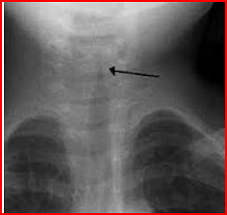Question:
A 48-year-old man presents with complaints of facial puffiness, frothy urine, and hypertension. He gives a history of infection with hepatitis B. Urine examination reveals microscopic hematuria. The histopathological image of the kidney biopsy shows a spike and dome pattern. What is the diagnosis of this condition ?
A 48-year-old man presents with complaints of facial puffiness, frothy urine, and hypertension. He gives a history of infection with hepatitis B. Urine examination reveals microscopic hematuria. The histopathological image of the kidney biopsy shows a spike and dome pattern. What is the diagnosis of this condition ?
Updated On: Jun 19, 2025
Minimal change disease
- Membranous nephropathy
- FSGS
PSGN-associated disease
Hide Solution
Verified By Collegedunia
The Correct Option is B
Solution and Explanation
The patient, a 48-year-old man, presents with facial puffiness, frothy urine, and hypertension. He has a history of hepatitis B infection and microscopic hematuria is noted on urine examination. The kidney biopsy shows a spike and dome pattern histologically. These clinical and pathological findings suggest Membranous nephropathy as the correct diagnosis.
Here is the rationale:
- Facial puffiness, frothy urine, and hypertension: These symptoms are commonly associated with nephrotic syndrome, characterized by significant proteinuria, hypoalbuminemia, and often hyperlipidemia.
- History of hepatitis B infection: Membranous nephropathy is linked with hepatitis B virus infection, among other causes.
- Microscopic hematuria: While not exclusive to membranous nephropathy, it can be present in this condition.
- Histopathological finding: The 'spike and dome' appearance is characteristic of membranous nephropathy, arising from subepithelial immune complex deposits that lead to thickening of the glomerular basement membrane.
Other options consideration:
- Minimal change disease: Typically presents with nephrotic syndrome but without hypertension or microscopic hematuria and there's no spike and dome pattern.
- Focal segmental glomerulosclerosis (FSGS): May present with hypertension and nephrotic syndrome, but histology would show segmental sclerosis and collapsing lesions, not spike and dome.
- PSGN (Post-Streptococcal Glomerulonephritis): Often occurs after streptococcal infections with a different histological presentation of subepithelial 'humps'.
In conclusion, the combination of clinical presentation, history of hepatitis B infection, and the distinctive biopsy findings indicate that the diagnosis is membranous nephropathy.
Was this answer helpful?
0
0
Top Questions on Pediatric Disorders
- A child presented to the hospital with cola-colored urine, hypertension, and puffiness of eyes. Laboratory investigations were done, and creatinine was 2.5 mg/dL. Treatment was started, and despite treatment, the patient did not improve for the next 3 weeks. The creatinine value increased to 4.5 mg/dL. Which among the following electron microscopic findings will be seen in this patient ?
- NEET (PG) - 2023
- Pathology
- Pediatric Disorders
- A 3-month-old baby presents with jaundice and clay-coloured stools. Lab investigation reveals that the baby has conjugated hyperbilirubinemia. The liver biopsy shows periductal proliferation. What is the most likely diagnosis?
- NEET (PG) - 2023
- Pediatrics
- Pediatric Disorders
- A child is brought to the hospital with respiratory distress and biphasic stridor. The radiograph is shown below. What is the diagnosis?

- NEET (PG) - 2023
- Pediatrics
- Pediatric Disorders
- An infant is brought with complaints of excessive watering of the eyes and photophobia. The image is given below. What is the likely diagnosis ?

- NEET (PG) - 2023
- Ophthalmology
- Pediatric Disorders
Chloride level in sweat is used in the diagnosis of which disease?
- NEET (PG) - 2023
- Pediatrics
- Pediatric Disorders
View More Questions
Questions Asked in NEET PG exam
The normal pH of arterial blood is:
- NEET (PG) - 2025
- General Science
Which enzyme is deficient in Gaucher’s disease?
- NEET (PG) - 2025
- General Science
Which of the following cranial nerves is responsible for the motor innervation of the muscles of mastication?
- NEET (PG) - 2025
- General Science
The anticoagulant effect of heparin is monitored using:
- NEET (PG) - 2025
- General Science
The causative agent of malaria is:
- NEET (PG) - 2025
- General Science
View More Questions